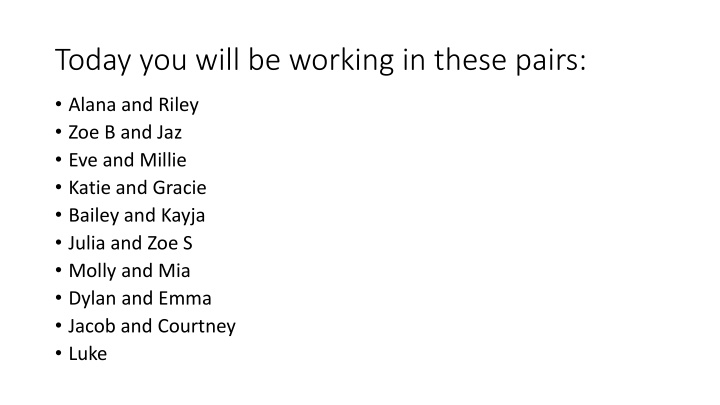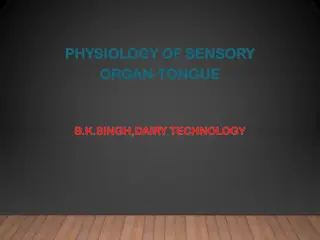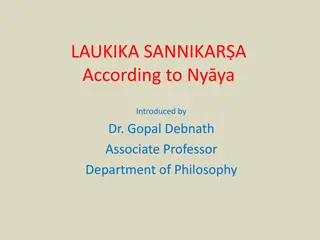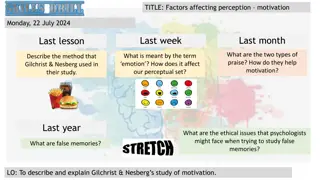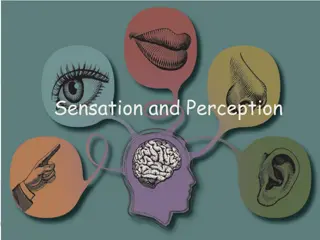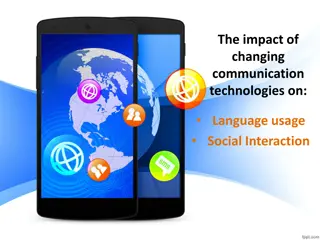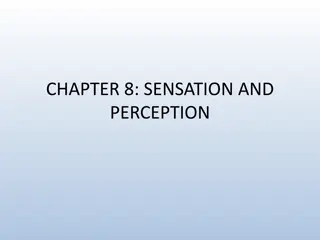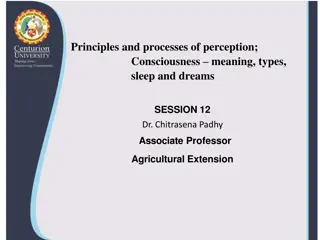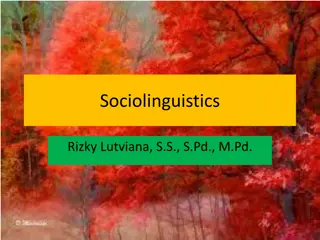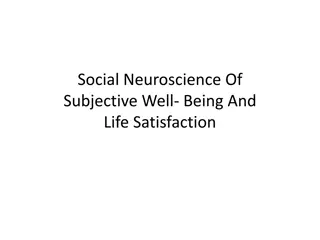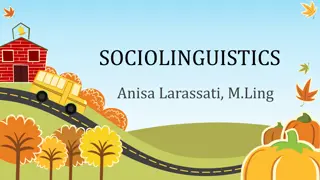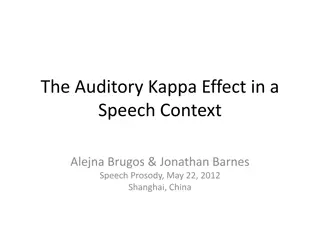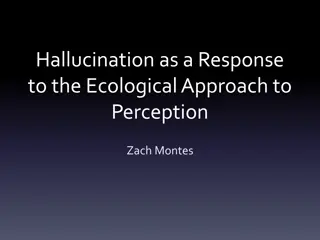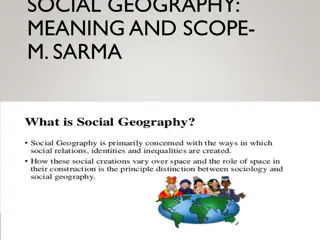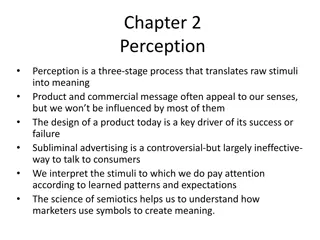Analyzing Language's Impact on Social Perception
Dive into how language shapes views of social groups and its consequences. Explore representation, perception, and theory to understand the dynamics at play.
Download Presentation

Please find below an Image/Link to download the presentation.
The content on the website is provided AS IS for your information and personal use only. It may not be sold, licensed, or shared on other websites without obtaining consent from the author.If you encounter any issues during the download, it is possible that the publisher has removed the file from their server.
You are allowed to download the files provided on this website for personal or commercial use, subject to the condition that they are used lawfully. All files are the property of their respective owners.
The content on the website is provided AS IS for your information and personal use only. It may not be sold, licensed, or shared on other websites without obtaining consent from the author.
E N D
Presentation Transcript
Today you will be working in these pairs: Alana and Riley Zoe B and Jaz Eve and Millie Katie and Gracie Bailey and Kayja Julia and Zoe S Molly and Mia Dylan and Emma Jacob and Courtney Luke
Discuss the idea that language can affect people s views of social groups. Here you are analysing the data, identifying and exploring the features of the text. This really asking you to discuss two things. 1. How language represents social groups How language is constructed and read by particular groups. 2. Explore how this representation affects people s views. Here you are engaging with the big ideas. Using theory and examples to back these up! ADAPT and MOULD that theory!
Gut Reaction Please What stands out? How could you answer this question? Discuss in your pairs. Think about EVERYTHING we have looked at and beyond! Write down as many ideas as possible!
Perceptive topic sentence THINK BIG and CONCEPTUAL! Answer the question Link and comment on the data WHAT is the data showing? HOW does it back up your initial point? Explain your use of the data. Use terminology. Link to Theory WHO agrees/disagrees with your idea? HOW can the theory support your findings? EVALUATE! Bring it all together Conclude your section. Offer an alternative idea. EVALUATE what you have said.
Pick your 3 most perceptive and juicy ideas EXAMPLE TOPIC SENTENCES
Topic sentence Linked to a wider idea/ theory. What does the data show? The data states . The range of numbes suggests...... The pattern of numbers is significant......it shows.... This number confirms/opposes the idea that... Reference the data. Use it like a quote. This shows/demonstrates/presents (INSERT LINGUISTIC TERM) .. Explore the data with reference to linguistic terms, offer examples An example of this is A speaker/writer may This conforms to/subverts X s proposal that In considering X s theory of . This finding would confirm X s idea that .. Back up and explore with some relevant/interesting theory How does this support your ideas? Offer an alternative point of view/theory. Evaluate the theory Recent research suggests Clearly from contemporary research . More recent studies illuminate the idea that . One observation shows . This conforms to/subverts X s proposal that In considering X s theory of . This finding would confirm X s idea that ..
How to approach in the exam Think about an introduction that shows you understand the question Pick 2-3 social groups that are represented within the data. You will use these to comment on in more detail. What is your line of argument? How does language affect people s views? Decide on the theories you can use - Remember adapt and mould!!
Language construction and usage is a huge factor in the presentation and reception of social groups. It may be argued that some groups, in particular young people, use language to create a collective identity; to show they belong to a particular group. Unfortunately the reception of the adaptation of standard English is not always positive. INTRO The mode of this data is clearly electronic and this is supported by the use of non-standard grammar, a feature common to this schema. This text has multiple producers and we can intelligently speculate, or assume, that this text is written by young people for young people. The first writer uses a non- standard personal pro-noun in me name . This pattern is continued by laila000 who states how u get that ; there is a distinct absence of a preposition. This coupled, with the the letter homophone u is a distinct feature of electronic texts which is arguably dominated by the social group of young people. We associate this language use with teens . TOPIC SENTENCE Exploration and analysis of data Looking at how social groups use language A purist perspective would suggest that this is negative degradation and has a powerful impact on language itself - reducing vocabulary and prestige. Many newspapers have reported on the link between teens language and the demise of literacy skills. Vivien De Clerk (2005) would see this improper usage as a desire for young people to establish themselves as different. It stems from a need to be seen as different from adults who control and represent a specific linguistic standard. She also suggests it allows young people to be part of a group and be seen as cool and fashionable . Theory View of social groups Arguably language is as much to do with the creation of identity and the desire to be included as it is a rebellion against standards. Within this data we see the use of slang in ..
Simple Essay The data suggests that . The data shows a pattern that links to the idea of..... X s theory suggests that....which links to the idea of...... The ------- model presents the idea that..... EXPLORE! ANALYSE! - What are these telling us about language. How does it link to the question? - Use examples - Offer theories - Evaluate theory/offer different intepretations
Top Tips for exam Top Tips for exam Synthetic personlisation .. Who is writing the text? Who is the text aimed at? Does the text achieve its purpose?
Your turn USE OF SLANG NON STANDARD GRAMMAR HOMOPHONES SHORTENINGS/CONTRACTIONS/ ABSENCE OF PUNCTUATION PARTICULARLY APOSTROPHES
